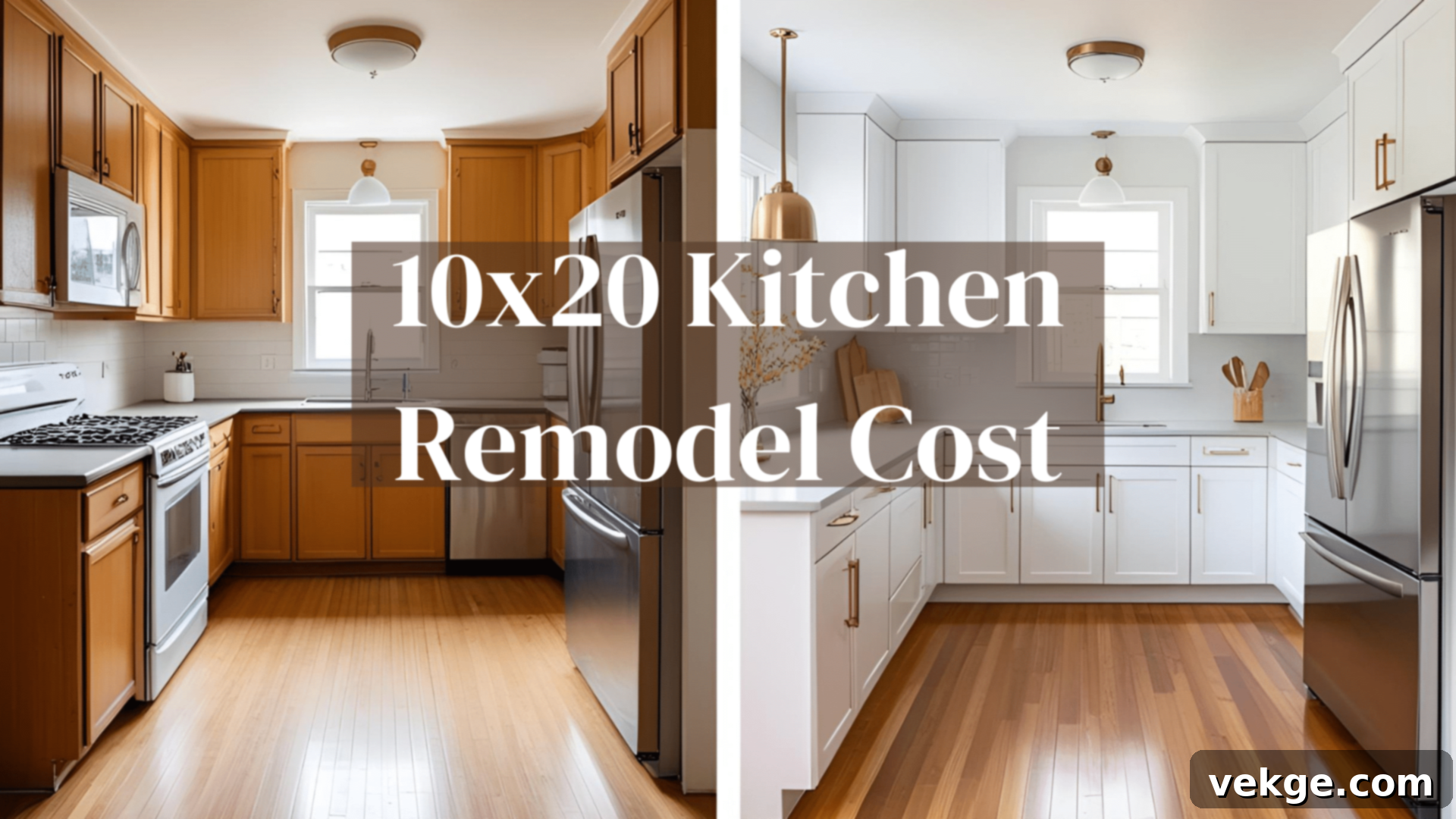Decoding 10×20 Kitchen Remodel Costs: Your Essential Guide to Budgeting & Savings
Embarking on a kitchen remodel is an exciting venture, especially for a spacious 10×20 footprint. This generous size offers ample opportunity for stunning design and increased functionality, but it also means a significant investment. Many homeowners dream of transforming their kitchen but are often overwhelmed by the potential costs and the complexity of the process.
This comprehensive guide is designed to demystify the financial aspects of a 10×20 kitchen remodel. We will meticulously break down the typical expenses by category, shed light on how regional differences impact your budget, and provide actionable tips to help you save money without compromising on quality or aesthetics. Whether you’re envisioning a cosmetic refresh or a complete structural overhaul, this article will equip you with the knowledge to establish a realistic budget, make informed decisions, and navigate your renovation project with confidence.
Factors That Influence the 10×20 Kitchen Remodel Cost
The total expenditure for a 10×20 kitchen remodel is highly variable, shaped by a multitude of interdependent factors. With 200 square feet of potential design space, this is considered a large kitchen, presenting both opportunities for grand designs and challenges in cost management. While most 10×20 kitchen remodels typically fall within the range of $19,000 to $43,000, high-end, custom projects can significantly exceed this, reaching upwards of $70,000, depending on your material selections, layout alterations, and the inclusion of specialized features.
Size and Scope of Work
A 10×20 kitchen provides a substantial 200 square feet, classifying it as a large kitchen in most residential contexts. This generous area naturally requires more materials for flooring, wall treatments, and cabinetry, directly influencing the overall cost. The scope of your project — from minor updates to a full-scale demolition and rebuild — will be the primary determinant of your final bill.
Simple cosmetic updates, such as repainting existing cabinets, replacing hardware, or updating light fixtures, are considerably less expensive. Conversely, a complete renovation involving the replacement of all cabinets, new appliances, and significant structural changes (like removing a wall to create an open-concept space) will incur substantially higher costs. Any alteration to the kitchen’s original layout, particularly moving plumbing or electrical lines, will escalate expenses due to the specialized labor and additional construction work required.
Materials and Finishes
The quality and type of materials you select for your kitchen surfaces and fixtures will profoundly impact the final cost. Cabinets, being both a functional necessity and a dominant visual element, often consume the largest portion of the budget, typically 30-40%. Prices for cabinetry can range from around $5,000 for standard stock options to over $15,000 for semi-custom or fully custom-designed units crafted from premium woods.
Countertop choices also present a wide price spectrum. Laminate options are the most budget-friendly, costing approximately $1,500-$4,000, while natural stones like granite or marble, or engineered quartz, can range from $3,000-$8,000 or more depending on the slab quality and fabrication complexity. Similarly, flooring choices, from durable vinyl plank to elegant hardwood or natural stone, can add between $1,000 and $5,000 to your budget. Opting for mid-range, quality materials often strikes an excellent balance between cost-effectiveness and a fresh, appealing aesthetic.
Labor and Installation Costs
Labor constitutes a significant portion of your kitchen remodel budget, typically accounting for 20-25% of the total, or roughly $4,000 to $10,000 for a 10×20 space. This covers a diverse range of professional services, including demolition, carpentry, plumbing, electrical work, and the precise installation of cabinets, countertops, and appliances. The more intricate or specialized your project, the more skilled labor and time will be required, leading to increased costs.
Labor rates are also heavily influenced by geographical location. Metropolitan areas and regions with a higher cost of living, such as the Northeast or the West Coast, typically have higher labor charges compared to the Midwest or Southern states. To ensure fair pricing and understand the market rate, it is always advisable to obtain detailed quotes from at least three different licensed contractors.
Permits and Regulations
Any kitchen remodel that involves structural changes, significant alterations to electrical wiring, or modifications to plumbing systems will necessitate obtaining permits from your local building department. Permit costs vary widely depending on your municipality and the complexity of the project, generally ranging from $400 to $2,000.
While these fees add to your initial budget, securing the necessary permits is a non-negotiable step. Skipping permits can lead to costly fines, difficulties when selling your home, and potential safety hazards if work is not done to code. Reputable, professional contractors are adept at navigating the permit application process and ensuring all work complies with local building codes and safety standards.
Kitchen Layout and Features
Maintaining your existing kitchen layout is one of the most effective strategies for cost savings, as it minimizes the need to relocate expensive plumbing, gas lines, and electrical wiring. Moving elements like the sink, refrigerator water line, or gas range connection can add several thousand dollars to your project due to the specialized labor and materials involved.
The inclusion of special features also directly impacts your budget. Desirable additions such as a custom kitchen island, integrated smart home appliances, sophisticated lighting schemes (e.g., under-cabinet or recessed lighting), a dedicated wine fridge, or a pot filler faucet all contribute to the overall expense. Each desired feature should be carefully evaluated against your overarching budget and your specific cooking and lifestyle needs to determine its true value and necessity.
Average Cost of a 10×20 Kitchen Remodel
Understanding the average costs for a 10×20 kitchen remodel helps in setting realistic expectations. As a 200-square-foot space, a 10×20 kitchen offers considerable design flexibility but also implies more surface area to update, impacting material and labor needs. Nationally, most 10×20 kitchen renovations range between $19,000 and $43,000, though projects employing luxury materials and extensive design changes can easily push budgets beyond $70,000.
National Cost Range
The national average cost for a 10×20 kitchen remodel can be categorized into three main tiers:
- Basic Remodel ($19,000 – $25,000): This tier focuses on cosmetic upgrades without altering the kitchen’s footprint. It typically includes refinishing existing cabinets or installing budget-friendly stock cabinets, new hardware, standard laminate or basic solid-surface countertops, new paint, and updating some entry-level appliances. The goal is a refreshed look and improved functionality without major structural changes.
- Mid-Range Remodel ($26,000 – $40,000): Offering a significant upgrade in quality and aesthetics, mid-range remodels often involve installing new semi-custom or quality stock cabinets, durable granite or quartz countertops, new mid-grade energy-efficient appliances, and potentially minor layout adjustments. This level delivers excellent value, enhancing both the style and long-term usability of your kitchen.
- High-End Remodel ($40,000 – $70,000+): At the upper end, high-end remodels feature custom cabinetry, premium natural stone (marble, high-grade quartz) or specialty countertops, professional-grade or smart appliances, and often a complete transformation of the kitchen layout. These projects might include luxury flooring, designer lighting, custom islands, and bespoke finishes, reflecting a desire for superior craftsmanship and personalized design.
Cost per Square Foot
When considering renovation budgets, kitchen remodels are often estimated on a per-square-foot basis, typically ranging from $100 to $350 per square foot. For a 200-square-foot kitchen, this translates to a total project cost between $20,000 and $70,000. This wide range highlights the impact of your material and labor selections.
Basic cosmetic updates, for example, might fall into the lower end of the spectrum, around $100-$150 per square foot. In contrast, comprehensive renovations utilizing custom elements, premium finishes, and extensive layout changes can reach $250-$350 per square foot or more. Factors such as the complexity of the design, the need for structural changes, and regional labor rates significantly influence this per-square-foot calculation, with urban centers and coastal regions often seeing higher rates.
Cost Breakdown by Category
To effectively manage your 10×20 kitchen remodel budget, it’s essential to understand how funds are allocated across different categories. This detailed breakdown allows you to identify areas where you might prioritize spending for maximum impact and where potential savings can be found.
Cabinets and Shelving
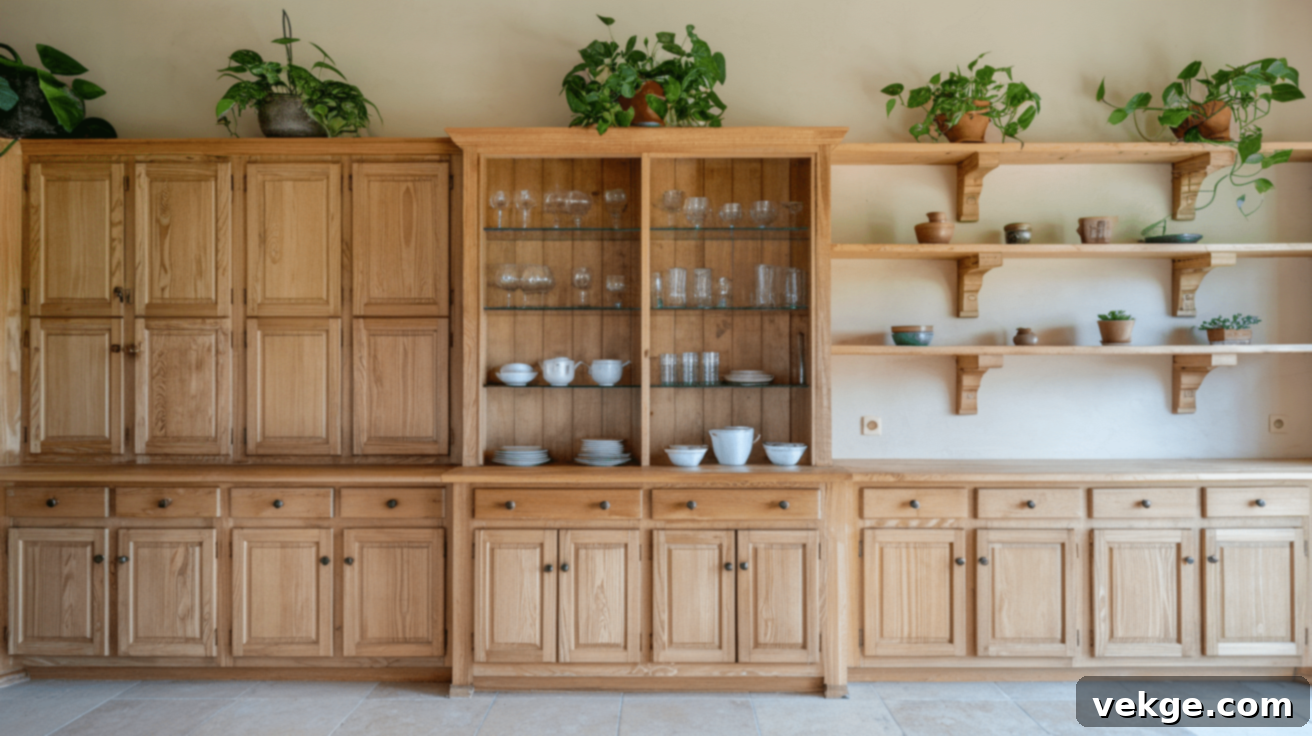
Cabinets represent the most substantial expenditure in a kitchen remodel, consuming approximately 30-40% of your total budget. For a 10×20 kitchen, expect to allocate between $8,000 and $18,000 for cabinets and shelving, including installation. The price variation stems from the type of cabinet:
- Stock Cabinets: Pre-manufactured in standard sizes, these are the most budget-friendly option, offering good value and quick availability.
- Semi-Custom Cabinets: Offering more design flexibility with a wider array of sizes, finishes, and door styles, these are a popular mid-range choice.
- Custom Cabinets: Tailored precisely to your kitchen’s dimensions and your specific design preferences, custom cabinets are the most expensive but provide unparalleled fit, unique features, and a truly bespoke look.
Factors like the wood species (e.g., maple, cherry, oak), door style, finish (paint or stain), and chosen hardware (knobs, pulls) also significantly influence the final price. Given their prominence and functional importance, many homeowners wisely choose to invest in quality cabinetry.
Appliances
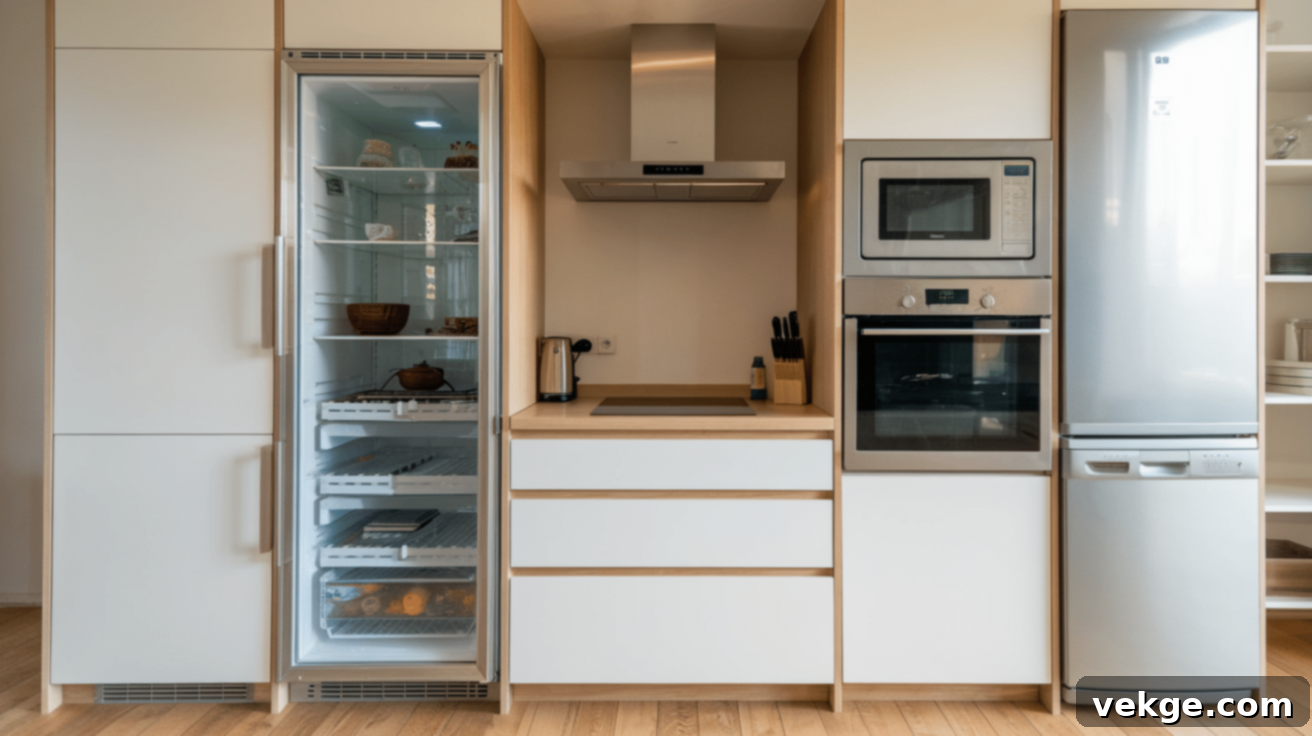
Appliances typically account for 15-20% of your kitchen remodel budget, with costs ranging from $3,000 for a basic suite to $10,000 or more for professional-grade or smart home integrated options. A standard appliance package usually includes a refrigerator, range/oven, dishwasher, and microwave. When selecting appliances, consider:
- Energy Efficiency: While potentially costing more upfront, ENERGY STAR® certified appliances can lead to significant savings on utility bills over their lifespan.
- Style and Finish: Stainless steel remains popular, but options like black stainless, panel-ready (integrated with cabinetry), or custom colors are available at various price points.
- Features: Smart features, convection ovens, induction cooktops, or built-in coffee makers add convenience but also increase the price tag.
Balancing desired features with your budget is key. Prioritize appliances that align with your cooking habits and lifestyle.
Countertops

For a 10×20 kitchen, expect to spend between $3,000 and $7,000 on countertops. This category is heavily influenced by your choice of material, which determines both aesthetics and durability:
- Laminate: The most budget-friendly option, offering a wide range of colors and patterns, including convincing stone and wood mimics, typically costing $1,500-$4,000.
- Granite, Quartz, Marble: These natural and engineered stone options are popular for their beauty, durability, and heat resistance. Costs range from $3,000-$7,000 or more, depending on the specific stone, thickness, edge profile, and fabrication complexity.
- Butcher Block: Offers a warm, natural look, typically in the mid-range.
- Concrete/Stainless Steel: More specialized options that can be pricier but offer unique industrial or modern aesthetics.
Given that countertops endure daily use, balancing your budget with a material that offers both visual appeal and robust functionality is crucial for long-term satisfaction.
Flooring
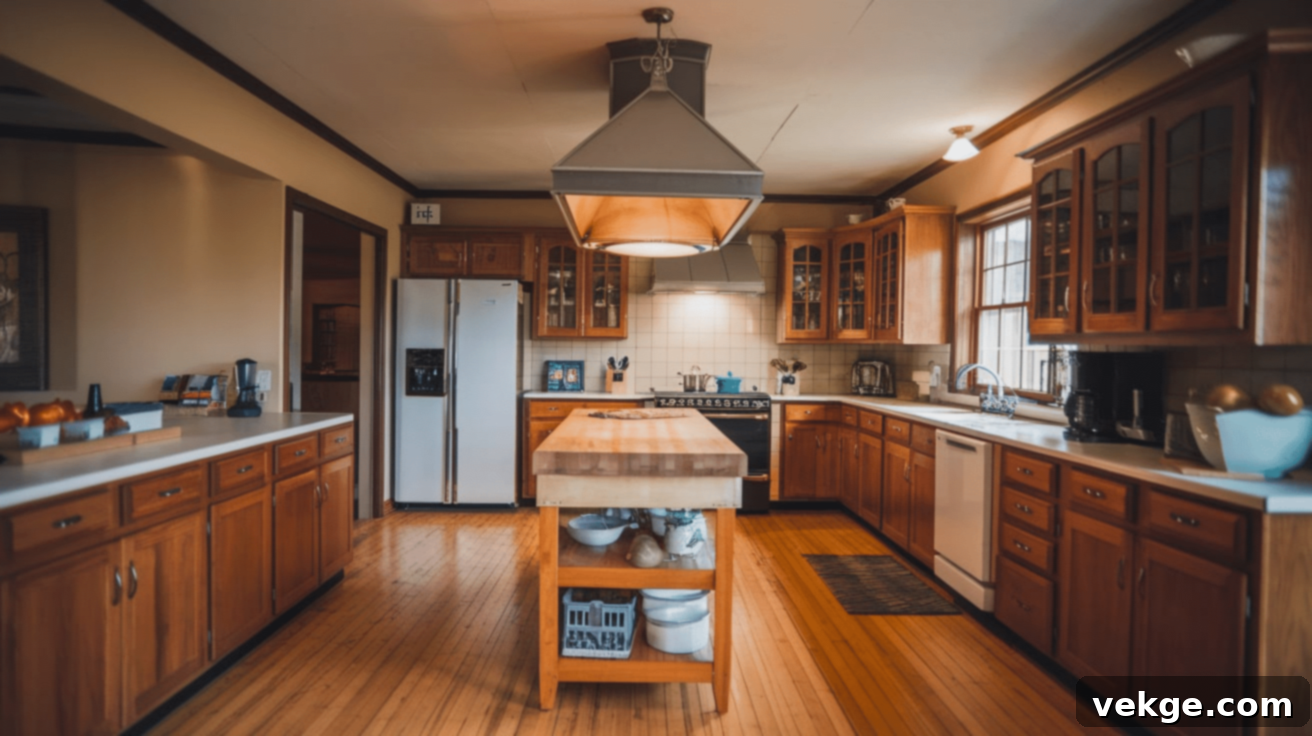
Flooring for a 200-square-foot kitchen generally costs between $2,500 and $6,000 installed. Kitchen flooring must be durable, easy to clean, and resistant to moisture and stains. Common options include:
- Vinyl/Laminate Plank: Highly affordable, water-resistant, and available in many styles mimicking wood or stone. Costs start around $1,000-$3,000 installed.
- Ceramic/Porcelain Tile: A classic and highly durable option, resistant to water and heavy traffic. It falls into the mid-range price point, offering longevity and diverse design possibilities.
- Hardwood/Engineered Wood: Offers warmth and classic beauty but requires more maintenance in a kitchen environment. Premium choices like hardwood or natural stone can range from $4,000-$6,000 or more.
Your choice should align with both your budget and lifestyle, prioritizing materials that can withstand the unique demands of a busy kitchen.
Lighting and Electrical
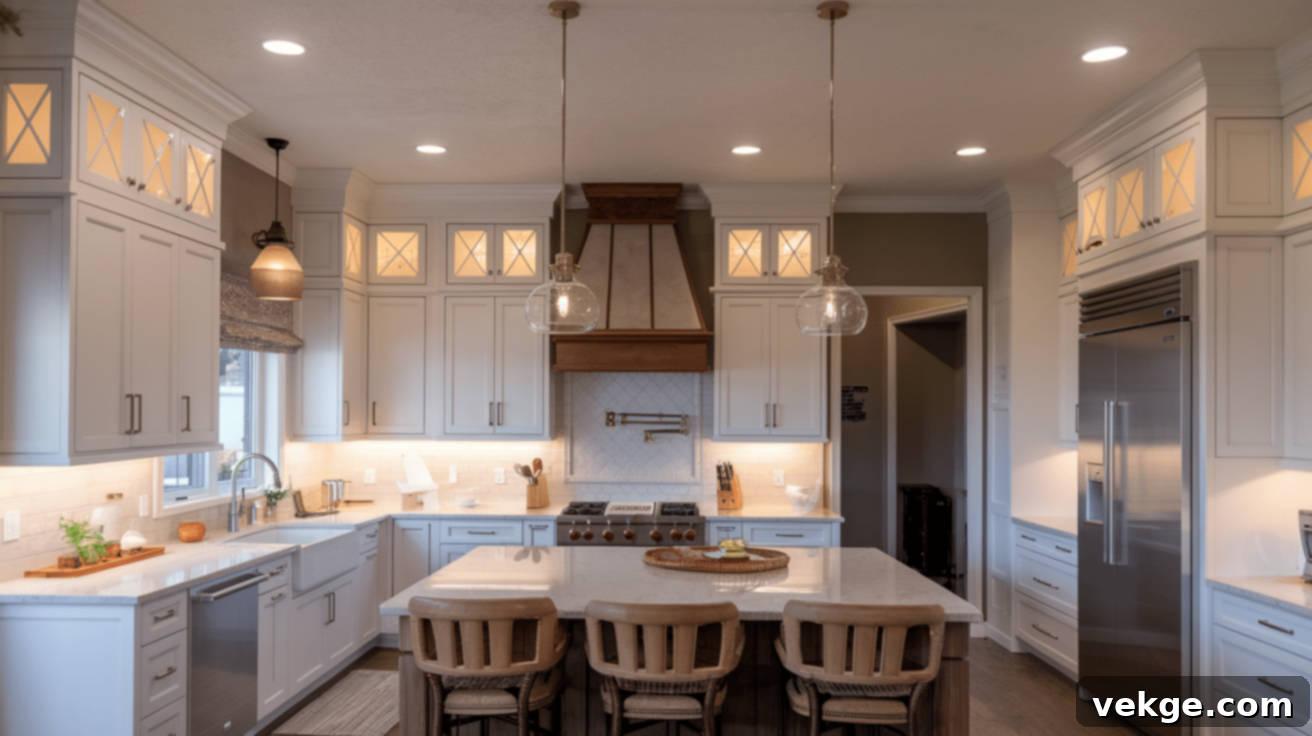
Allocate $1,500-$4,000 for lighting and electrical work. This budget covers new fixtures, wiring upgrades, and potentially the addition of new outlets, switches, or dedicated circuits for high-power appliances. A well-designed kitchen lighting plan incorporates multiple layers:
- Ambient Lighting: Provides overall illumination (e.g., recessed lights, flush mounts).
- Task Lighting: Brightens work areas like countertops and stovetops (e.g., under-cabinet lights, pendant lights over an island).
- Accent Lighting: Highlights architectural features or decor (e.g., in-cabinet lighting, toe-kick lighting).
Adding smart switches, dimmers, or specialized LED systems will increase costs but enhance functionality and ambiance. All electrical work, especially circuit modifications, requires permits and professional installation to ensure safety and compliance with building codes.
Plumbing and Fixtures
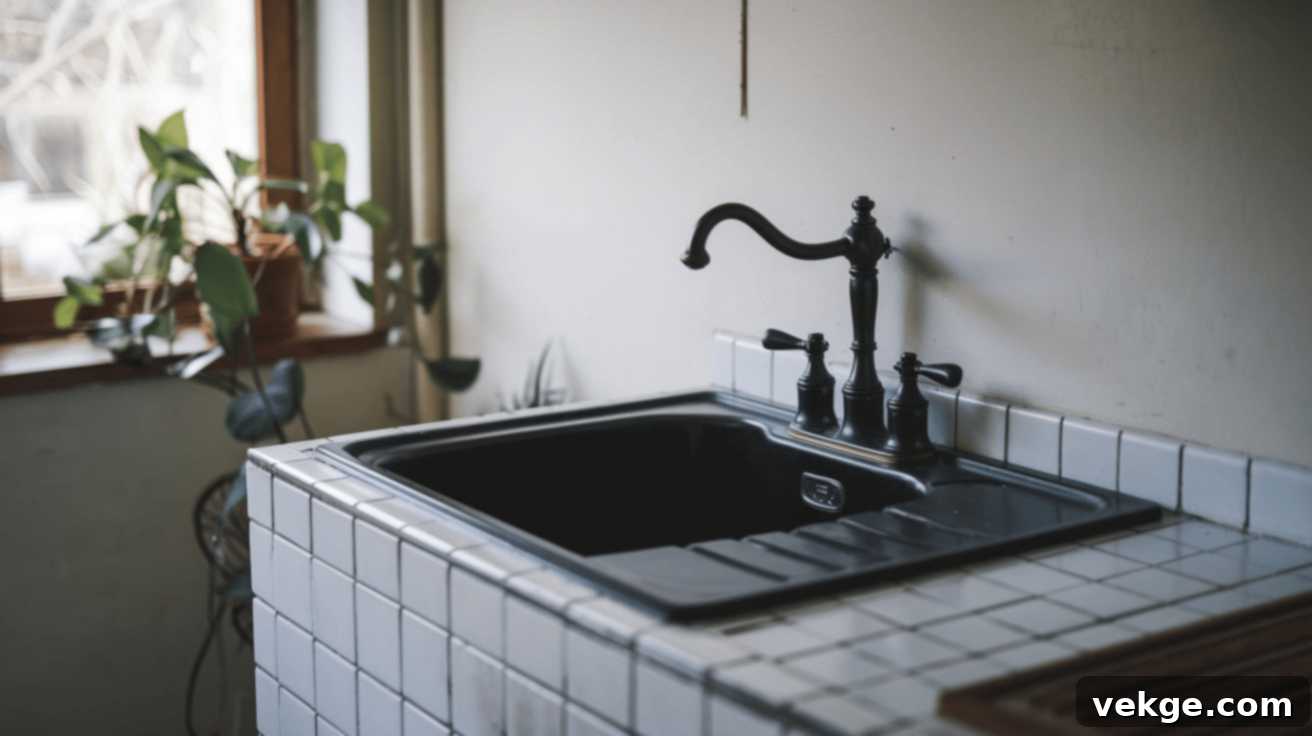
Budget $1,500-$3,000 for plumbing and fixtures in your kitchen remodel. This includes the cost of sinks, faucets, and any necessary pipe work. Standard, good-quality fixtures start around $500, while high-end designer options or those with advanced features (like touchless faucets) can easily exceed $1,500. Key considerations include:
- Sink Material: Stainless steel is common, but composite granite, cast iron, and fireclay offer different aesthetics and durability.
- Faucet Style: Pull-down, pull-out, and commercial-style faucets are popular for their convenience.
- Relocating Plumbing: Moving the sink or dishwasher to a new location significantly increases costs due to the labor and materials needed for new water supply and drain lines.
Adding extra features like a water filtration system, garbage disposal, or a pot filler faucet near the stove will also add to the budget. Investing in quality plumbing components prevents future leaks and costly repairs.
Backsplash
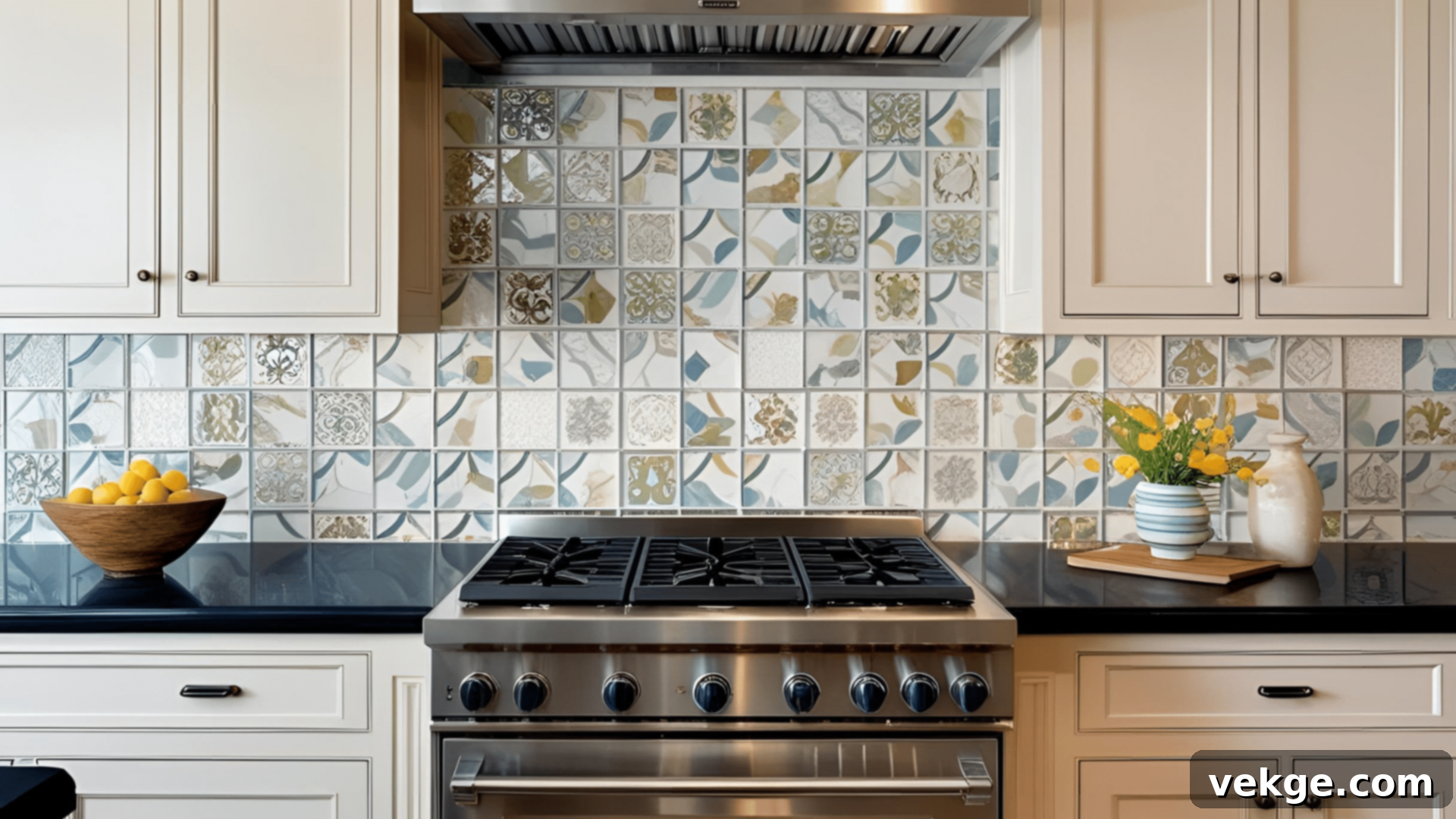
Plan on spending $1,000-$2,500 for your kitchen backsplash. While a relatively small area, the backsplash offers a fantastic opportunity to add a personal touch and visual interest. Simple ceramic subway tiles are the most affordable, starting around $800 installed. More elaborate materials like glass, natural stone (marble, travertine), or intricate mosaic patterns can push costs towards the higher end.
Installation costs vary based on the material chosen and the complexity of the design or pattern. While some handy homeowners might attempt a simple tile installation themselves, complex designs or delicate materials often require professional expertise to ensure a flawless finish. This detail can tie your entire kitchen design together.
Walls and Ceiling
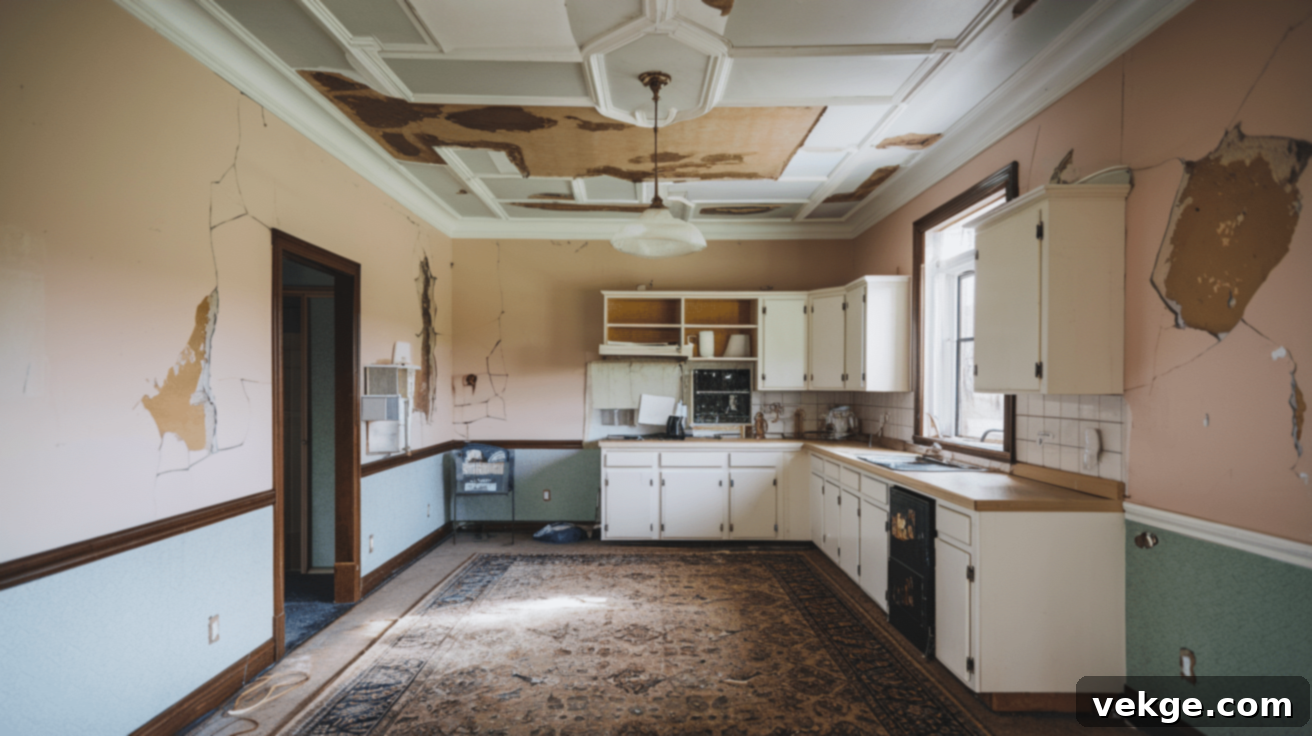
Allocate approximately $1,000-$2,500 for preparing and finishing your kitchen’s walls and ceiling. This budget covers essential tasks such as drywall repair, patching holes, sanding, priming, and painting. During a kitchen renovation, contractors often uncover hidden issues like minor water damage, outdated wiring that needs repair, or uneven surfaces that require attention before new finishes can be applied.
Choosing moisture-resistant, washable paint is highly recommended for kitchen walls, as it helps withstand cooking steam, food splatters, and general wear and tear. While this category may represent a smaller fraction of the overall budget, a freshly painted and smooth surface significantly enhances the overall aesthetic and cleanliness of your newly remodeled space, making a huge visual impact.
Regional Cost Differences for a 10×20 Kitchen Remodel
The geographic location of your home plays a crucial role in determining the final cost of your 10×20 kitchen remodel. Local economic conditions, labor markets, material accessibility, and specific building codes all contribute to significant price variations across different regions of the country.
Urban vs. Rural Pricing
The disparity in remodeling costs between urban and rural areas is often substantial. Here’s why:
- Labor Costs: Urban centers typically have a higher cost of living, which translates into higher wages for skilled tradespeople and contractors. This can make urban labor rates 20-30% more expensive than those in rural settings.
- Overhead and Business Costs: Contractors operating in cities often face higher overheads, including rent for offices, insurance, and transportation expenses, which are passed on to the client.
- Material Delivery: While cities may have better access to a wider variety of suppliers, the logistics of material delivery in dense urban environments (e.g., parking restrictions, traffic) can sometimes add to costs. Conversely, remote rural areas might incur higher freight charges for specialized materials.
- Permit Fees and Regulations: Urban areas often have more stringent building codes and higher permit fees, adding to the bureaucratic and financial burden of a renovation.
- Demand: High demand for remodeling services in popular urban areas can drive up contractor prices and extend project timelines.
Regional Averages
Here’s a general overview of 10×20 kitchen remodel costs by major U.S. region:
- West Coast ($35,000 – $65,000): States like California, Washington, and Oregon typically experience higher remodeling costs. This is attributed to elevated labor rates, stricter environmental and building regulations, and a strong demand for modern, high-end designs and materials.
- Northeast ($40,000 – $70,000+): This region, including states like New York, Massachusetts, and Connecticut, generally sees the highest renovation costs. Factors include high labor costs, expensive material sourcing, and the prevalence of older homes that often require extensive structural or system upgrades to meet current codes.
- Midwest ($30,000 – $50,000): Homeowners in states such as Ohio, Michigan, Illinois, and Indiana benefit from more moderate living costs and labor rates, making kitchen remodels here relatively more affordable compared to coastal regions.
- South ($28,000 – $45,000): Southern states like Texas, Georgia, Florida, and North Carolina often offer the most budget-friendly kitchen renovation options. Lower labor costs, a generally lower cost of living, and fewer extreme weather-related building requirements contribute to these more attractive prices. However, popular coastal areas or booming metropolitan centers within the South may see slightly higher rates.
Smart Ways to Save on Your 10×20 Kitchen Remodel
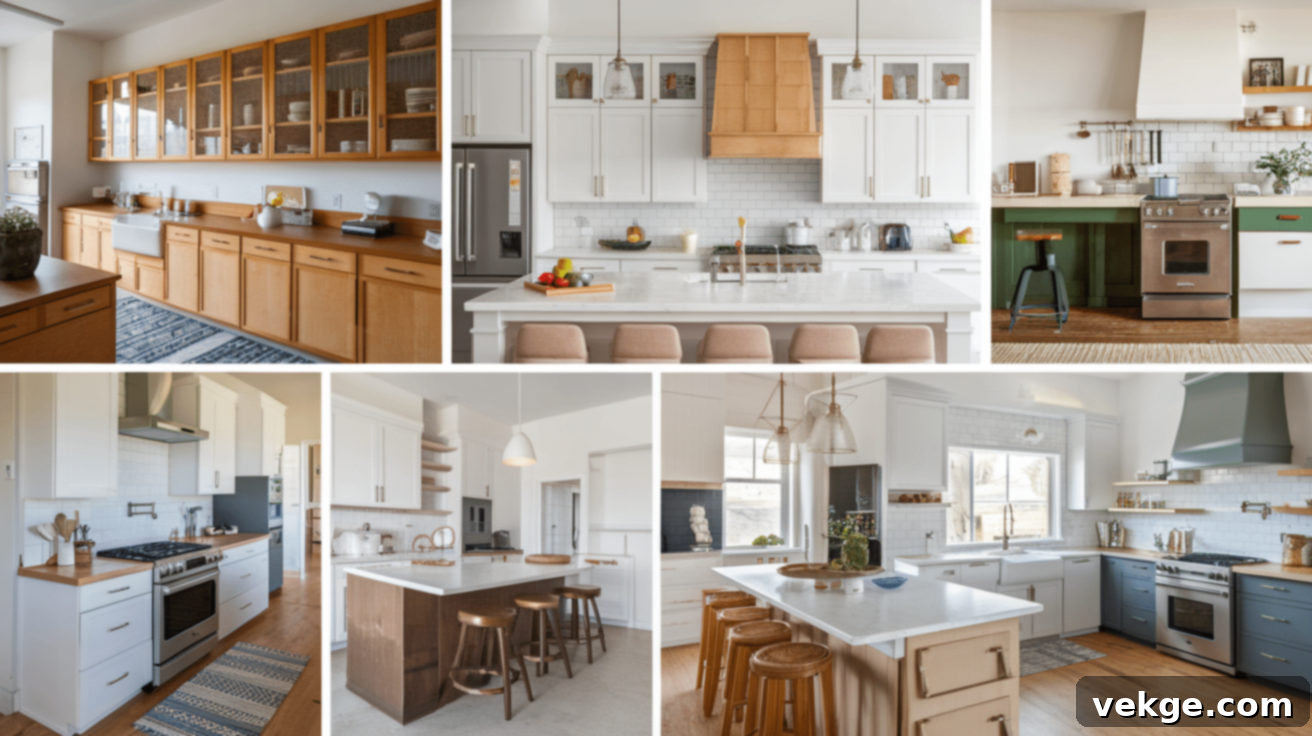
Undertaking a renovation for a large 10×20 kitchen doesn’t necessarily mean emptying your savings. With strategic planning and clever choices, you can achieve a beautifully updated and highly functional space while effectively managing your budget. These money-saving tips are designed to help you allocate your resources where they will make the most significant impact.
Simplify the Design
One of the most impactful ways to save thousands of dollars is to avoid changing your kitchen’s existing layout. Moving plumbing lines (for sinks or dishwashers), gas lines (for ranges), or electrical outlets can add anywhere from $2,000 to $5,000 per fixture due to the labor-intensive nature of these tasks and the need for specialized trades. Work within your current footprint, focusing on aesthetic updates and material upgrades rather than structural reconfigurations.
Furthermore, choosing standard-sized cabinets and appliances significantly reduces costs compared to custom options. Stock cabinets, typically available in 3-inch increments, fit most kitchen designs well and can offer 30-50% savings over custom-built units. Similarly, standard appliance dimensions (e.g., 30-inch ranges, 36-inch refrigerators) are widely available, less expensive, and offer a broader selection of models and features than custom or built-in units.
DIY Where Possible
Taking on certain tasks yourself can substantially reduce labor costs, which typically account for 20-25% of your total budget. Homeowners with basic skills and a willingness to learn can handle tasks like:
- Demolition: Safely removing old cabinets, countertops, or flooring.
- Painting: Applying new paint to walls and potentially existing cabinets.
- Installation of Hardware: Attaching new cabinet pulls, knobs, or light fixtures.
- Basic Tile Work: Simple backsplash installations (though complex patterns are best left to professionals).
Even small DIY contributions, such as preparing the site or post-renovation cleanup, can save a few hundred to a couple of thousand dollars. However, always defer specialized work like plumbing, electrical wiring, gas line modifications, or any structural alterations to licensed and experienced professionals. Mistakes in these critical areas can lead to dangerous conditions, code violations, and significantly more expensive repairs down the line.
Choose Affordable Materials
Material selection is a prime area for budget control. Modern advancements mean that more affordable materials often offer impressive durability and aesthetics:
- Countertops: High-quality laminate countertops ($1,500-$4,000 for a 10×20 kitchen) are a budget-friendly alternative to granite or quartz ($3,000-$8,000). Today’s laminates are far more sophisticated, replicating the look of natural stone or wood convincingly.
- Cabinets: Opt for stock cabinets from major home improvement retailers, which offer good quality and diverse styles for around $5,000-$8,000 for a 10×20 kitchen, compared to $12,000-$18,000+ for custom options. Refacing existing cabinets is another cost-effective strategy.
- Flooring: Luxury vinyl plank (LVP) flooring provides excellent durability, water resistance, and a wide array of styles (mimicking wood or tile) at $2-$7 per square foot installed. This is significantly less than hardwood ($8-$15 per square foot) or some natural stone options.
Mixing and matching can also be effective; for example, using a premium material on a visible island countertop and a more affordable option on perimeter counters.
Get Multiple Contractor Quotes
Never settle for the first quote you receive. Always solicit at least three detailed bids from different licensed and insured contractors. Price discrepancies can be substantial, often varying by 15-20% for the exact same scope of work. When comparing quotes, ensure that each contractor has itemized the costs by category (materials, labor, permits, etc.) and specifies the exact materials and brands they intend to use. This level of transparency helps you to accurately compare bids and identify any areas where a contractor might be overcharging or, conversely, cutting corners that could impact quality.
Beyond price, carefully evaluate their references, reviews, portfolio, and their proposed timeline. The lowest bid isn’t always the best value; reliability, communication, and quality of workmanship are equally, if not more, important for a successful renovation project.
Is a 10×20 Kitchen Remodel Worth It?
Deciding to invest in a 10×20 kitchen remodel is a significant decision that involves weighing both financial returns and personal enjoyment. While the costs can be substantial, a thoughtfully planned and executed renovation often yields considerable benefits in terms of daily living quality and the long-term value of your home. Consider how long you intend to remain in your home and which specific improvements will bring the most satisfaction to your family and enhance your lifestyle.
Return on Investment (ROI)
Kitchen remodels consistently rank among the top home improvements for generating a strong return on investment. Most 10×20 kitchen projects, especially mid-range renovations, can recoup anywhere from 60% to 80% of their initial cost when you eventually sell your home. Real estate professionals frequently highlight an updated, functional, and aesthetically pleasing kitchen as a key selling point that attracts potential buyers, potentially increases property value, and helps expedite the sale process.
Beyond the tangible financial returns, an improved kitchen significantly enhances your daily life. A well-designed layout can streamline cooking tasks, making meal preparation more enjoyable and efficient. New, energy-efficient appliances not only perform better but can also lead to lower utility bills. Furthermore, a fresh, modern design transforms the kitchen into a more inviting and comfortable space for family gatherings, entertaining guests, and creating lasting memories. These improvements contribute to a higher quality of life that extends beyond monetary value.
When to Reconsider
While the benefits are clear, there are instances where a full-scale 10×20 kitchen remodel might not be the most prudent investment:
- Over-Improving Your Neighborhood: Financial experts generally advise keeping your kitchen remodel budget below 15-20% of your home’s total market value. For example, if your home is valued at $400,000, aiming for a kitchen budget under $60,000-$80,000 ensures you don’t “over-improve” for your area, which could make it harder to recoup your investment upon resale.
- Existing Home Issues: Prioritize addressing any significant structural, electrical, plumbing, or foundation issues in your home before undertaking a large cosmetic renovation. These foundational problems can be expensive to fix and, if ignored, can compromise the integrity and safety of your new kitchen.
- Short-Term Residency: If you anticipate moving within 1-2 years, a major kitchen overhaul may not provide enough time for you to fully enjoy the benefits, nor will it guarantee a full recoup of your investment. In such cases, minor updates like fresh paint, new hardware, updated light fixtures, or a countertop refresh might be a more financially sensible approach.
Conclusion
Remodeling a 10×20 kitchen is indeed a substantial undertaking, but armed with the detailed information in this guide, you are now better equipped to plan your budget wisely and make informed decisions. Remember that the final cost is highly dynamic, influenced by your geographic location, the quality of materials chosen, and the overall scope of work. Most homeowners can expect to spend between $19,000 and $43,000, with cabinetry and labor typically representing the largest budget allocations.
To optimize your budget and achieve your dream kitchen without overspending, prioritize simplifying your design by maintaining the existing layout, consider strategic DIY contributions, and carefully select affordable yet durable materials. Always obtain multiple, detailed quotes from reputable contractors and diligently check their references to ensure a smooth and successful project. With careful planning, your 10×20 kitchen remodel can truly transform your home, providing enhanced enjoyment and significant value for many years to come.
